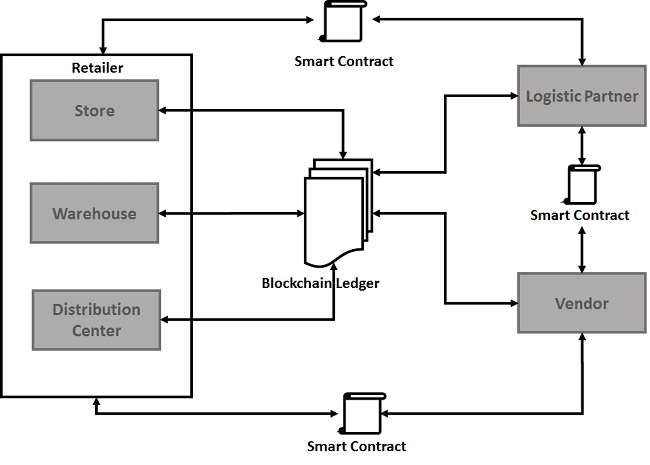 Real-time inventory data management has been a game changer in the retail industry. However, one of the biggest data issues is knowing the status of inventory at any given point of time — from the factories and warehouses to the backrooms to the shelves. However, the issues are compounded when customers expect to have inventory visibility across the supply chain (pre- and post-purchase). Yet surprisingly, many retailers still use manual data inputs to collect and update enterprise inventory records, which brings the inherent risk of human error.
Real-time inventory data management has been a game changer in the retail industry. However, one of the biggest data issues is knowing the status of inventory at any given point of time — from the factories and warehouses to the backrooms to the shelves. However, the issues are compounded when customers expect to have inventory visibility across the supply chain (pre- and post-purchase). Yet surprisingly, many retailers still use manual data inputs to collect and update enterprise inventory records, which brings the inherent risk of human error.
An item in its lifecycle can be marked incorrectly due to administrative errors, theft, vendor fraud, miscount or unknown losses. This is accounted as “inventory shrinkage” in financial statements. The 2019 National Retail Security Survey (NRSS) released by National Retail Federation (NRF) and the University of Florida, stated that the average shrink rate has been 1.38% since 2014. However, when extrapolated on an industrywide basis, that would be an estimated $50.6 billion impact on the retail industry.
Traditional inventory management systems are centralized. However, they can lack traceability and transparency and can be subject to mismanagement. Hence, retailers must invest in new, upgraded technologies to avoid inventory shrinkage. An emerging technology such as blockchain provides transparency, traceability and immutability of transactions, leading to efficient inventory management.
Let’s look at different steps retailers need to take to implement blockchain to deal with shrinkage.
Advertisement
Understanding The Efficacy Of Blockchain
Retailers should invest in creating a permission-based private blockchain. This would provide a database that centralizes transactions, bringing all warehouse, stores vendor and logistics partners together. All inventory transactions within this chain would be verified at each point it passes, creating a traceable network. Within the chain, retailers also can incorporate smart contracts, an agreement designed to digitally facilitate, verify or enforce the transaction of a contract. Smart contracts also can be used to manage contracts between retailer-vendor and retailer-logistics partners.

Figure 1: Enterprise architecture in the permission-based blockchain
To visualize this concept, look at the figure above that represents the typical enterprise architecture of the blockchain. Enterprise architecture in the permission-based blockchain is open to only a few entities. The blockchain interaction among different players is secured by a private key and a public key. The agreements between different players are governed by smart contracts, to avoid any disputes. All the players mark the entry of the inventory transaction, such as sales, returns, receiving etc., in the blockchain ledger. The entry is then validated by different nodes, which are essentially responsible for being communication points that can perform different functions. Any node can access the information in the ledger, providing transparency and traceability of the transaction. The nodes validate every new transaction applied in the ledger, hence there is accountability and immutability of the transactions.
Stores also can mark the entry in the ledger when the product is sold or returned, creating a chain of transaction for the individual item with real-time audit. Smart contracts also can be implemented when pre-conditions are met among the players. For example, the retailer will pay the logistics vendor only when all the goods received at the warehouse or stores are in pristine condition.
So How Does Blockchain Help In Managing Inventory Shrinkage?
The retailer should start by understanding causes of inventory shrinkage before investing in technologies. If the inventory shrinkage is caused due to lack of the inventory system tracking, inefficient inventory audit processes, contract management, return processes, etc., then blockchain provides an excellent solution. Integrating blockchain with big data systems also can provide insights about the buying behaviors of customers, selling patterns of products, high return products and fragile items.
Along with traceability, blockchain also provides a solution for inventory shrinkage caused by other factors, such as administrative errors, paperwork errors, vendor fraud, vendor errors and return fraud, and here’s how:
Administrative and Paperwork Error: Traditional inventory management systems are not able to keep up with omnichannel strategies like ship-from-store, ship-to-store, buying online and returning, etc. All these strategies involve movement of inventory across different channels, which can lead to genuine inventory management mistakes.
A private blockchain can eliminate the need to manually interfere with the inventory management system. With blockchain, operations done on the product, such as movement from one store to another, picking and packing of the product, keeping the product in hold location, can be marked to individual products. Any manual interference with inventory will be avoided as the transactions are immutable and will be verified by different nodes in the blockchain. Events occurred on the product can be sent to the big data platform to trace different transactions on that product. Traceability, transparency and immutability will make sure that manual intervention of inventory management is error-free.
Vendor Fraud and Error: Most times, fraud happens due to mishandling of contracts between retailer and vendor or logistic partner and retailer. This can be largely attributed to the lack of proper integration between the vendor and retailer system. Any manual intervention by the vendor to change inventory already on its way from warehouse to retailer also is subject to fraud.
Blockchain can help by implementing smart contracts between different parties such as vendor, logistics partner and retailer. Smart contracts are automatically enforced when conditions in the contract are met. Retailers and vendors can avoid unnecessary contract dispute resolutions and get transparent services. A distributed ledger avoids the need to have a centralized repository of information and provides the same information to all the parties in the chain.
Return Fraud: A recent study by Statista estimated that by 2020, return delivery costs in the United States would reach $550 billion. As retailers grow their presence online, they are facing more returns than ever. There is no guarantee that the returned merchandise would be in absolute perfect condition. According to the 2019 NRSS, over the past five years, cyber-related incidents are the top issue for most retailers, with 51% citing return fraud, including incidents involving purchases made online but picked up in stores. Most of the returned products does not reach their intended destination or are damaged by the time they reach the retailer. Blockchain can help in tracing the returned merchandise to the store and logistics partner. The distributed ledger can help retailers identify the lifecycle of the product; from the time the product is bought by the customer until it is returned. Any abuse of the product during the process can be clearly identified and proper action can be taken. Any merchandise that is returned too often can be highlighted to the vendor, which would help in reducing shrinkage cost.
For an industry that is undergoing a huge digital shift, rising technologies such as blockchain can provide a great opportunity for retailers to build consistency, transparency, traceability and ultimately trust. It is truly an effective and efficient way to reduce shrinking cost, which is a necessity for retailers who want to thrive and break the shrinking retail inventory curse in the digital age.
Yogesh Meshram is a Principal Consultant in Domain Consulting group at Wipro. With 12 years of experience in supply chain and distributed Order, inventory management and optimization space. Meshram also has experience in using machine learning to solve fulfillment and allocation problems.
Faraz Ghani is Managing Consultant in Global Consulting Group focusing on digital strategy and transformation in the areas of Store Operations and Supply Chain. He has more than 12 years of global experience in omnichannel retail. Ghani is currently serving a large U.S. client, helping the company to establish a roadmap and delivering store of the future solutions. He specializes in store operations, omnichannel solutions, supply chain and in-store mobility.




